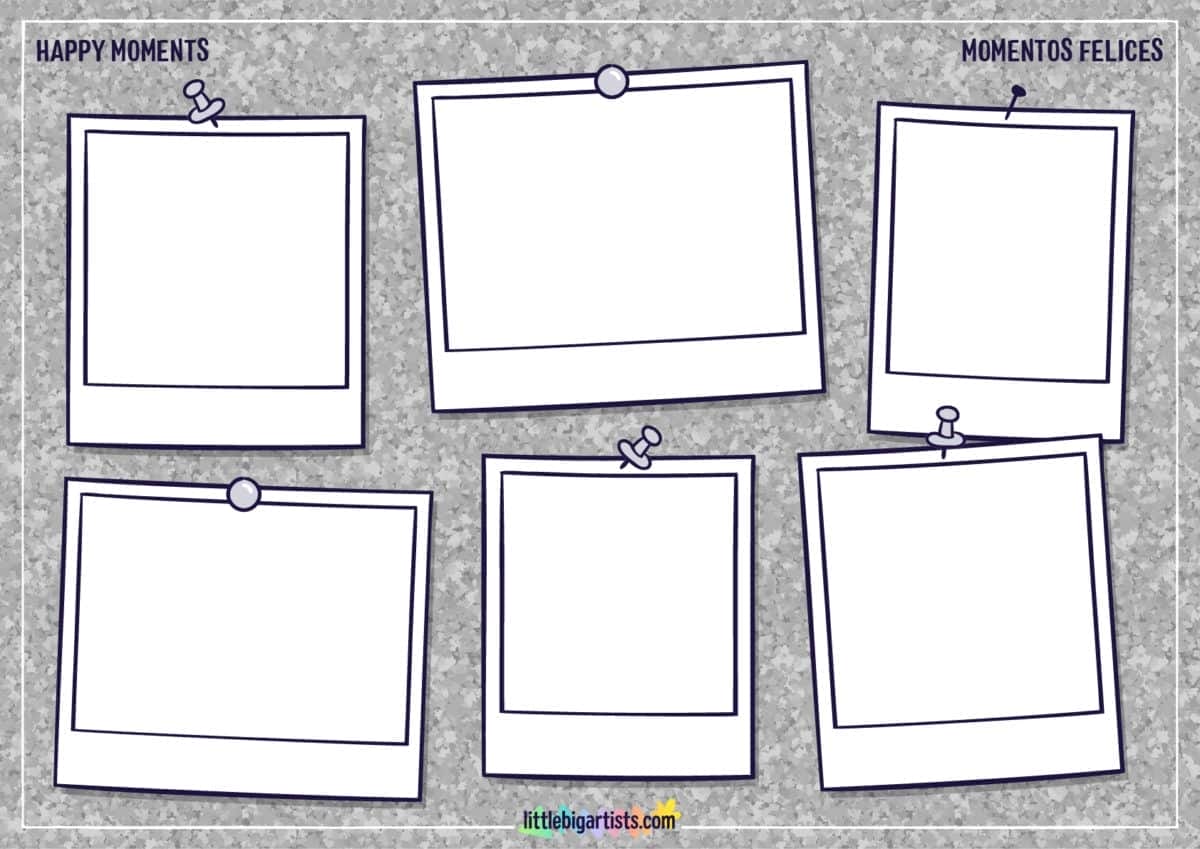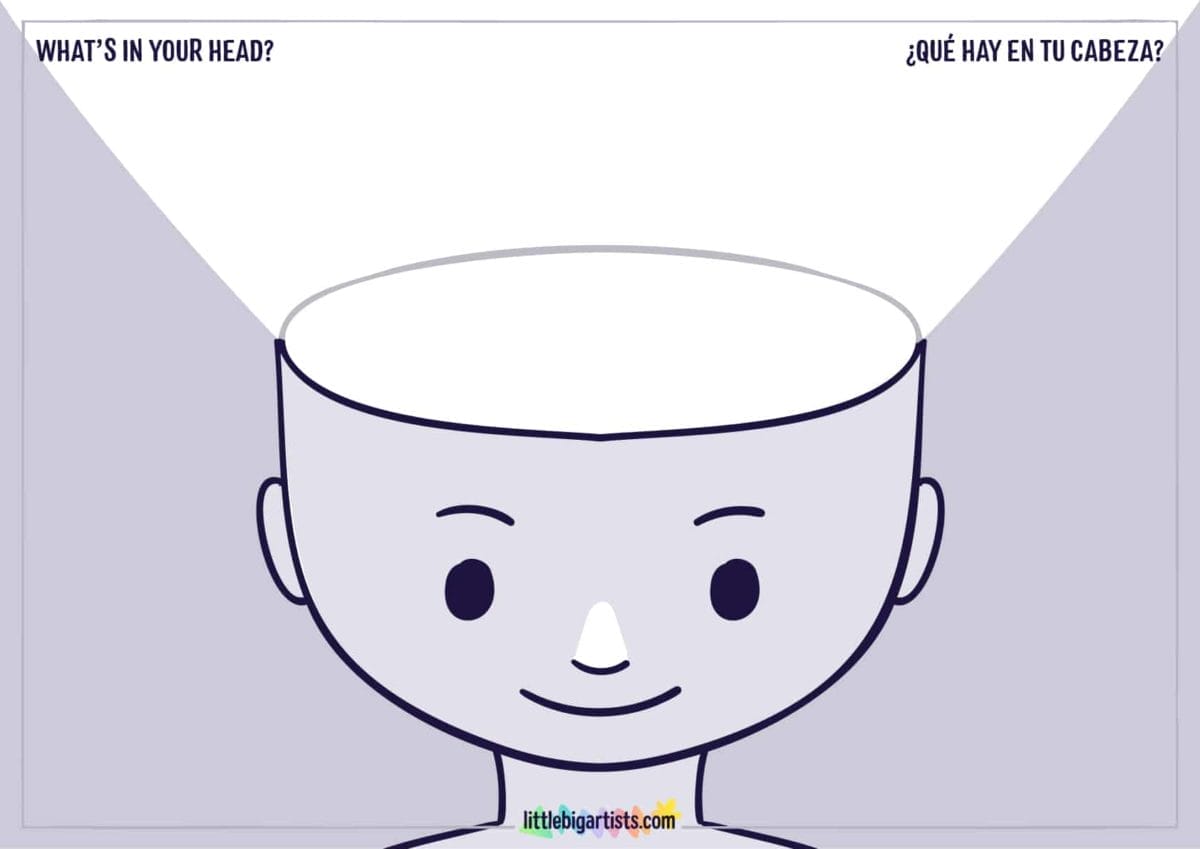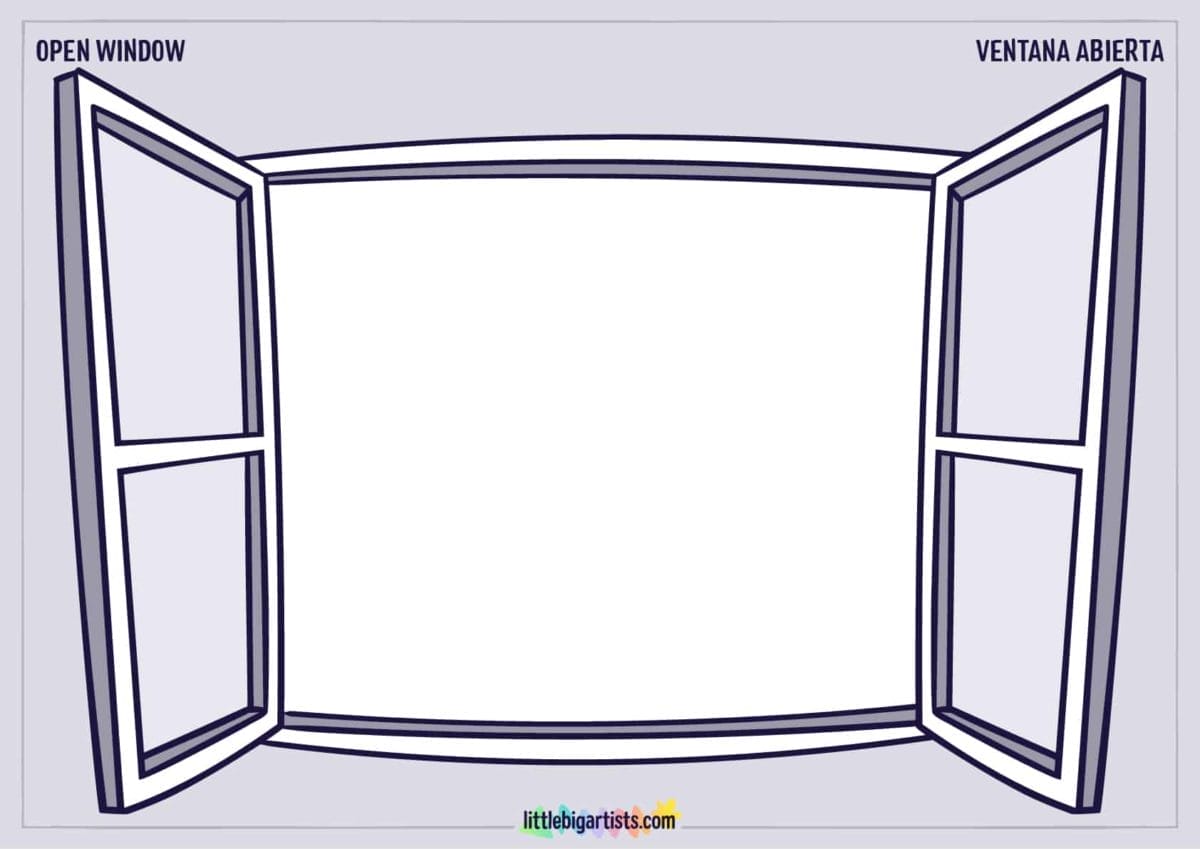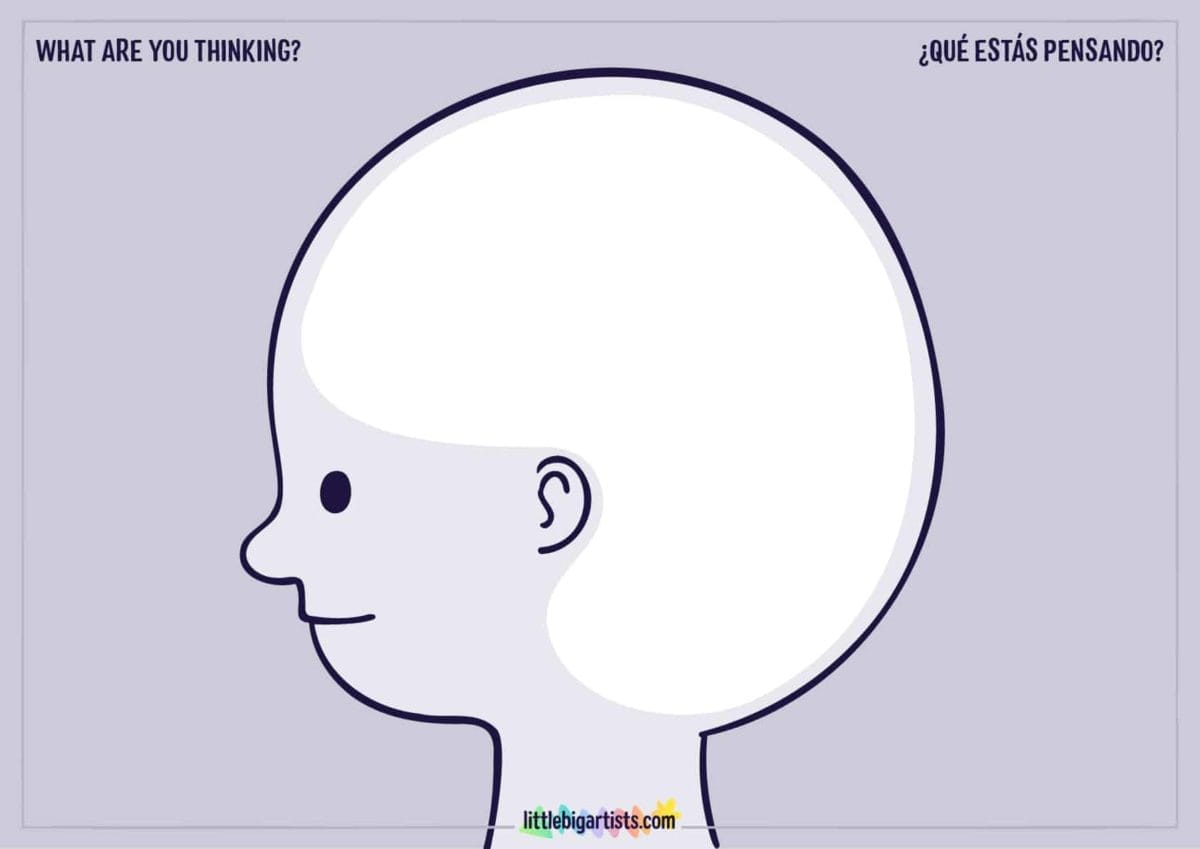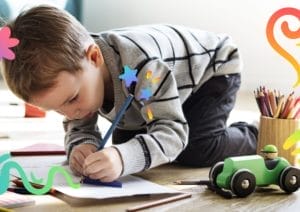Art helps bring thoughts and emotions to life. This is why caregivers often encourage children to express themselves through drawing.
Drawing and painting enable children to engage their senses, explore and make sense of the world around them. Through drawing, kids can easily express their emotions and feelings. Also, research shows that a single session of drawing improves mood in children and art therapy significantly improves the anxiety symptoms of children.
In this article, you’ll learn about the value of drawing as a form of expression. Additionally, you’ll discover printable activities designed to aid children in expressing their emotions. Let’s get started!
- How drawing helps kids express feelings and emotions
- Expressing through art: 6 drawing activities for children
- Techniques for encouraging self expression
- Before you go

How drawing activities help kids express themselves
- Drawing allows children to communicate feelings they may struggle to verbalize.
- Drawing enhances intellectual growth by improving children’s awareness of their environment and strengthening their problem-solving skills.
- Drawing supports perceptual growth by helping children absorb, organize, and interpret sensory information through their artwork.
- Drawing promotes social development by encouraging children to reflect on their interactions and relationships with others.
- Drawing nurtures creativity and builds confidence by allowing children to freely express their ideas and transform thoughts into visual art.
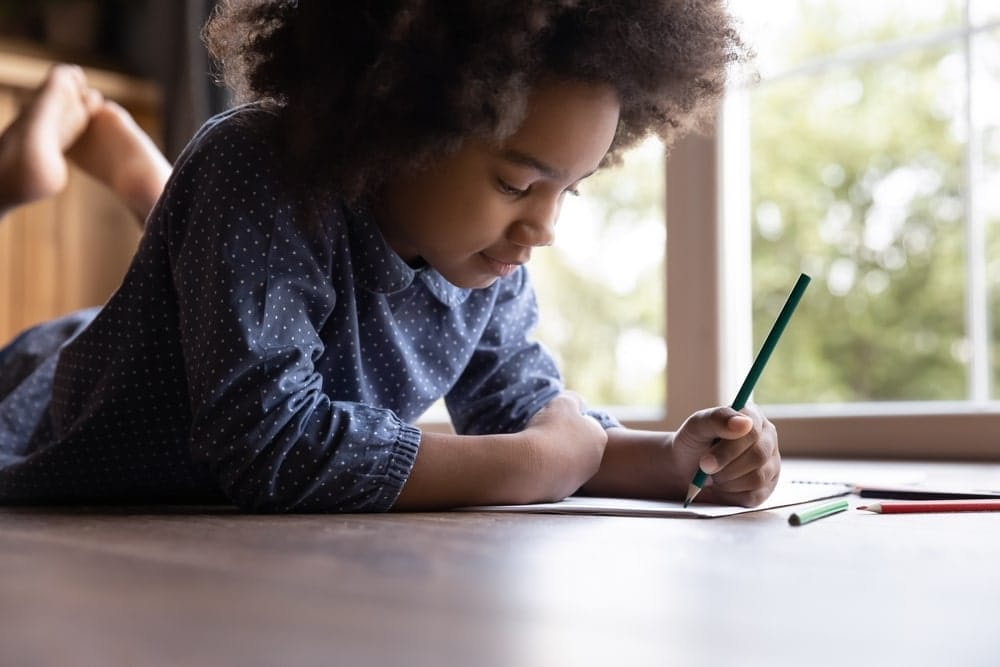
Expressing through art: 6 drawing activities for children
These art activities are a helpful exercise for children to express what they think and feel if, for various reasons, they are not able to verbalize it. They can be used in conjunction with lessons, as a classroom exercise, as an art therapy activity or simply at home for entertainment and communication.
Download our free drawing activities for kids printables to get started right away.
What Do You Say
This worksheet is an excellent way for kids to practice being self-aware! It lets them express themselves by drawing out feelings, ideas, thoughts, and concerns. Also, it is a good activity when kids are frustrated because they feel they have not been listened to or their opinion has not been taken into account. Not only is it fun, but it also challenges them to think differently and focus on their thought patterns.
Happy Moments
How about grabbing some crayons and letting your child draw a picture of a time when they were happy? This activity allows your child to share their feelings through drawing. Plus, it teaches kids to focus on the task at hand and pay attention to detail.
What’s in Your Head?
Looking for a fantastic way for your kids to practice self-awareness? Allow them to express the things they’re passionate about. This worksheet is specially designed to inspire them to draw and showcase their interests, but also their emotions, in a fun and engaging way.
My Selfie
Stimulate your child’s imagination with the possibilities of this self-representation: does it have filters? is it your present or future self? does it represent your emotions at this moment? does someone else show up?
Open Window
What’s on the other side of the window? Are you looking out the window to the outside or inside a building? and more importantly, what would you like to see through the window? This activity is oriented to allow the child to express their desires but also their fears or issues that cause distress.
What are You Thinking?
This activity helps children visualize their thoughts and feelings, and can be a great way to spark their creativity and imagination. It is also a good activity for kids to calm down when they feel angry, frustrated or nervous.
Techniques for encouraging self expression
In order to promote self-expression through drawing and maximize the benefits of these activities, all while ensuring the child has an enjoyable and imaginative experience, consider implementing the following tips.
Tip 1: Use Creative Prompts
If the child finds it difficult to start drawing give them ideas for what to draw, such as their favorite animal, a happy memory, or a place they’d like to visit. This can help spark their imagination and inspire them to express themselves through art.
Tip 2: Encourage Discussion
Give your kids the opportunity to open up about their drawings and what they represent. Ask questions to help them think about the emotions and ideas behind their art. It can help them connect their inner thoughts and feelings to their drawings and develop a deeper understanding of themselves.

Tip 3: Provide Materials
Offer a variety of materials for children to use, such as different types of paper, pencils, markers, and paint. It’ll give them more options for expressing themselves and help them find the most suitable medium.
Tip 4: Create a Supportive Environment
Ensure kids feel safe and comfortable sharing their drawings, regardless of their skill level. Teach them to support each other’s art and praise them for their creativity.
It’s also important that you refrain from judging or correcting your child’s drawings. Instead, focus on the positive aspects of their artwork and ask open-ended questions that encourage them to open up.
How to Encourage Your Child to Draw: 7 Home-Tested Methods
Have you ever seen your little one gaze at a colored pencil as if it were an alien object? Discover how to turn that reluctance into a colorful and creative journey that benefits their development.
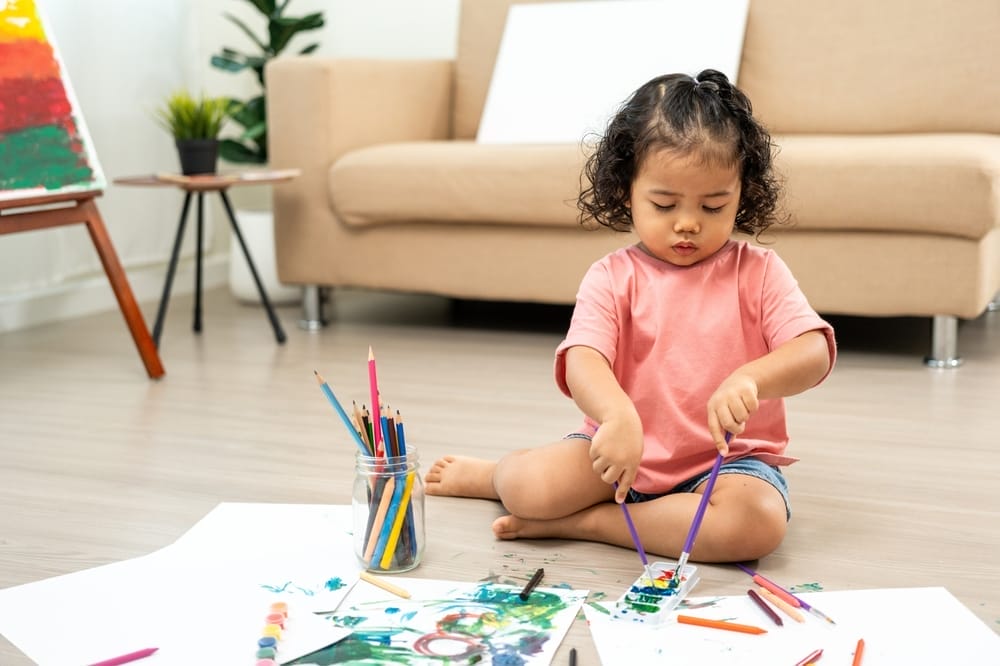
Before you go
Drawing provides a language for kids to express their thoughts and ideas, which improves as they develop the ability to convey their reactions, opinions, and needs. Furthermore, through the child’s drawings, caregivers gain insight into how the child perceives and interprets their thoughts and experiences.
Helping your children express themselves through drawing can be really useful during their education. Not only is this creative activity great for boosting their fine motor skills and problem-solving abilities, but also can help with relaxation and stress relief. Want to encourage your kids to draw? Don’t miss these articles:
- 11 Drawing Activities to Unplug Your Kids from Screens
- How to Encourage Your Child to Draw: 7 Home-Tested Methods
Want to learn more?

For a deep dive on this topic, I recommend:
Children Draw: A Guide to Why, When and How Children Make Art
By Marilyn JS Goodman
Aimed at parents and caregivers, this book explores the meaning and value of drawing for youngsters, from toddlers aged two to preadolescents aged twelve.



